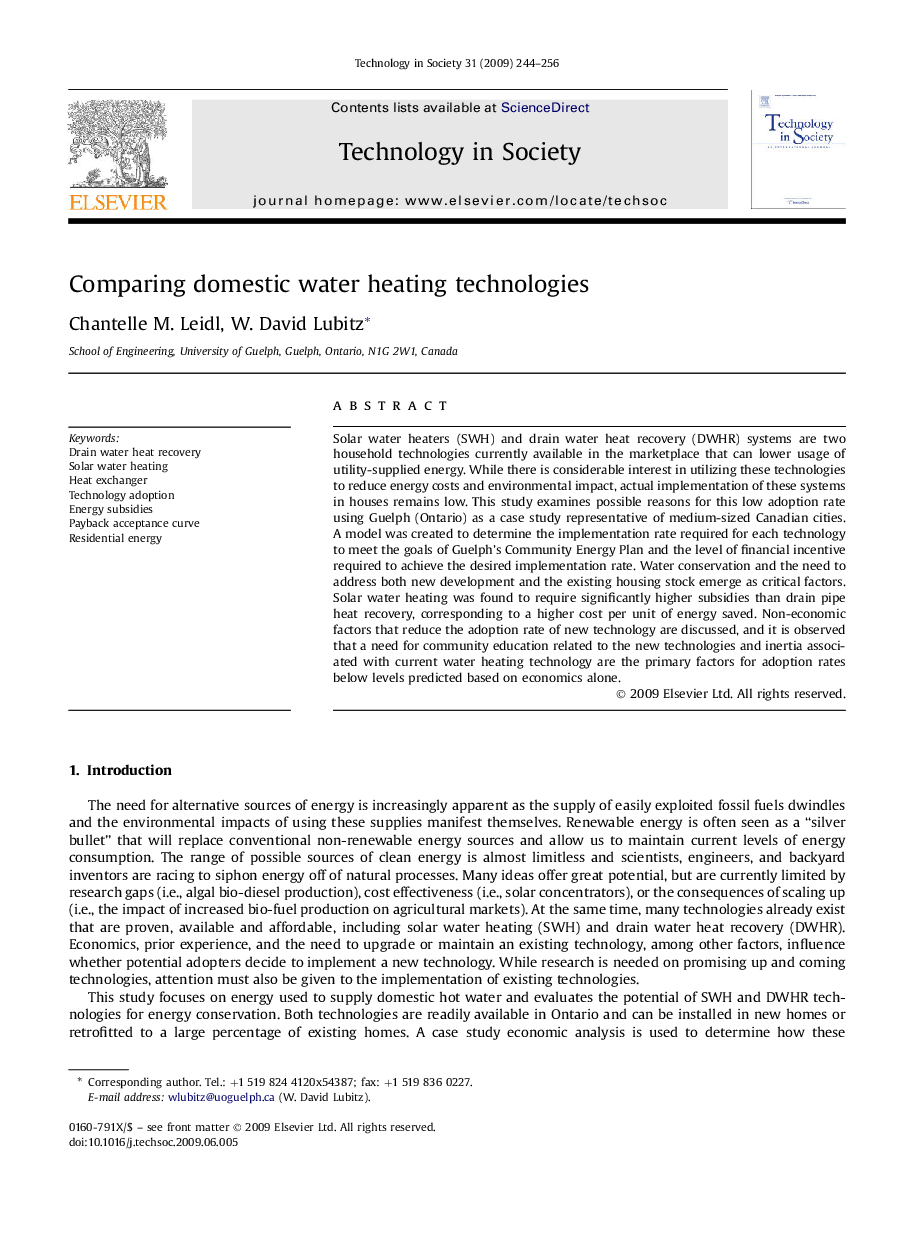| Article ID | Journal | Published Year | Pages | File Type |
|---|---|---|---|---|
| 375298 | Technology in Society | 2009 | 13 Pages |
Solar water heaters (SWH) and drain water heat recovery (DWHR) systems are two household technologies currently available in the marketplace that can lower usage of utility-supplied energy. While there is considerable interest in utilizing these technologies to reduce energy costs and environmental impact, actual implementation of these systems in houses remains low. This study examines possible reasons for this low adoption rate using Guelph (Ontario) as a case study representative of medium-sized Canadian cities. A model was created to determine the implementation rate required for each technology to meet the goals of Guelph's Community Energy Plan and the level of financial incentive required to achieve the desired implementation rate. Water conservation and the need to address both new development and the existing housing stock emerge as critical factors. Solar water heating was found to require significantly higher subsidies than drain pipe heat recovery, corresponding to a higher cost per unit of energy saved. Non-economic factors that reduce the adoption rate of new technology are discussed, and it is observed that a need for community education related to the new technologies and inertia associated with current water heating technology are the primary factors for adoption rates below levels predicted based on economics alone.
